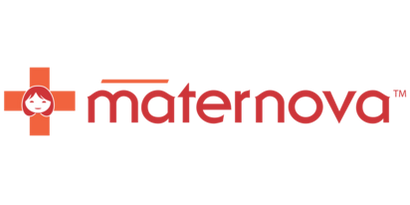Add description, images, menus and links to your mega menu
A column with no settings can be used as a spacer
Link to your collections, sales and even external links
Add up to five columns
Add description, images, menus and links to your mega menu
A column with no settings can be used as a spacer
Link to your collections, sales and even external links
Add up to five columns
A technological 'ChARM' to help diagnose pneumonia in the community
mars 30, 2025 2 lire la lecture
The ChARM is a clever device with a decade plus of history behind it– like many global health innovations, an original inspiration takes years to bring to fruition.
A call by UNICEF back in 2014 articulated the criteria for an automated respiratory rate monitor to make it easy for community health workers to count breath rates.
Here’s how UNICEF stated the problem: “….counting breaths in children is difficult. The [respiratory rate] RR can alter depending on the environment and technique used by the person who counts which leaves space for human error that often leads to mis-diagnosing. Furthermore, there is no set definition of a breath, meaning it is not possible to validate when a breath has been counted correctly. In many cases, counting simply does not happen.”
Two key innovations were put forth as a result of the UNICEF call, or ‘target product profile.’ One of the devices was the ChARM, developed by Philips, with input from Save the Children. After all of the trials were undertaken, the device was further improved and is now manufactured by a new company called ChARM International.
The ChARM uses an accelerometer to measure chest accelerations and decelerations– respiratory rate. The device is calibrated for three different age groups (0-2 months, 2-12 months and 12 months to five years old). The ChARM is strapped around a child’s chest. A community health worker is taught to choose the right age group for the child. And then a simple press of a button on the side of the device starts the measurement. .
Multiple studies have been conducted to assess the accuracy and usability of the ChARM.
In Nepal, the majority of health workers, across all regions, preferred the ChARM to the previously used “timer” devices.

In Ethiopia, health extension workers were interviewed after a formal study– they noted that the use of the ChARM attracted more child health visits from the community.
In a second Ethiopian study, the usability of the ChARM was specifically analyzed relative to the ability to follow the manufacturer’s instructions for use and adherence to the World Health Organization’s required assessment of fast breathing. In this study, after two months, the health workers increased adherence to 74.6%, an 18 % increase compared to the baseline two months prior.
Perhaps a health worker summarized the usability results best, saying, “Before ChARM we counted RR manually. Now the ChARM shows us the result and the classification…. It makes things easier. I see no barriers and the community is willing.” Esther, Goyda Health Center, Ethiopia.
Laisser un commentaire
Les commentaires sont approuvés avant leur publication.
Voir l'article entier
Pumani bubble CPAP
novembre 11, 2025 1 lire la lecture
The Pumani bubble CPAP was engineered by a team at Rice University in Texas, working in collaboration with clinicians in Malawi. A range of specific design considerations made the Pumani especially appropriate for low-resource settings so that parts are easy to replace.
The MaternaWell Tray for PPH estimation now appears in key obstetric guidelines
octobre 30, 2025 1 lire la lecture
A 'tray' is now mentioned in the FIGO/WHO/ICM Consolidated Postpartum Hemorrhage Guidelines published by in 2025, expanding the type of monitoring device from drape to drape or tray.
Is it ethical to separate mother and infant just after birth?
octobre 28, 2025 2 lire la lecture
Immediate skin to skin care means less than ten minutes after the infant takes its first breath, the infant, naked except for a diaper, spends at least one hour on the mother’s chest, against her skin. It is recommended that preterm and low birth weight kangaroo care involve prolonging contact beyond the first hour for at least 8 hours per day or as long as possible (up to 24 hours) per day

